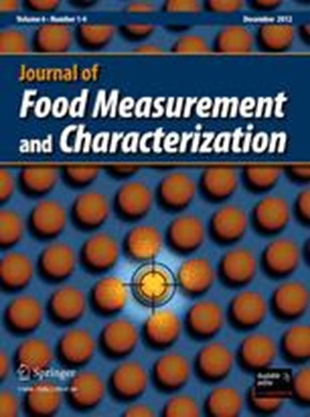Effects of honeysuckle powder on pasting, structure and 3D printing properties of yam powder
Abstract
3D printing technology facilitates the customization of food production, but there is a lack of exploration of medicinal plant substrates in this field. This study investigated the multiscale properties and 3D printing performance of yam-honeysuckle powder gel using yam powder as the main material and adding honeysuckle powder with special content (3%). The results showed that the loessial soil yam (LY) showed a higher water-holding capacity (WHC) of 2.51% and a greater distribution span of 3.02 μm. The addition of honeysuckle powder reduced the breaking value (BV) and trough viscosity (TV) of sandy soil yam (SY) and loessial soil yam (LY) powder. LY and loessial soil yam-honeysuckle (LYJ) showed higher hardness and chewiness. Fourier transforms infrared spectroscopy (FT-IR) confirmed no significant difference in functional groups and chemical bonding between various groups of yam-honeysuckle gel. X-ray diffraction (XRD) confirmed no significant difference in characteristic peaks. Sandy soil yam-honeysuckle (SYJ) was tested for stronger gel strength and denser microstructure. From the 3D printing results, LY and SYJ showed higher accuracies of 1.04 and 1.49, respectively. After 15 days of frozen storage, the accuracy of LY and SYJ was 1.57 and 4.37, respectively. Overall, LY and SYJ are more accurate than SY and LYJ. Therefore, LY and SYJ showed better printing performance. These results also show that the addition of honeysuckle powder can improve the water retention capacity, gel strength, and printability significantly of yam gel. There is no unfavorable effect on its chemical bond or crystal structure. This helps maintain the integrity of gel while advancing functional food technology.

 求助内容:
求助内容: 应助结果提醒方式:
应助结果提醒方式:


